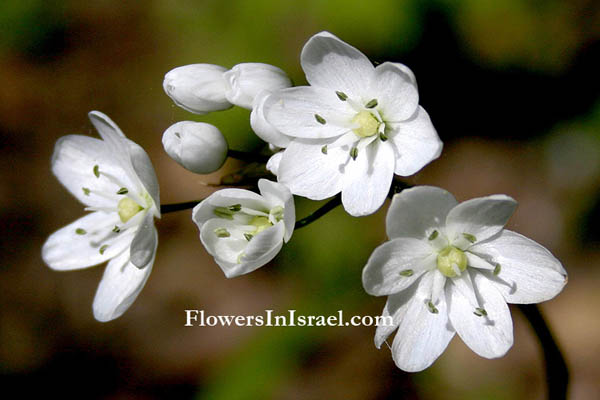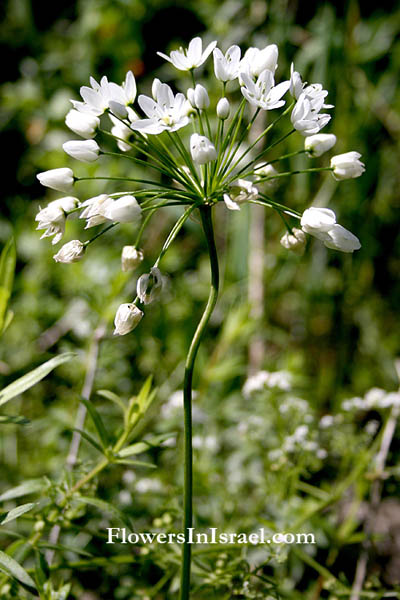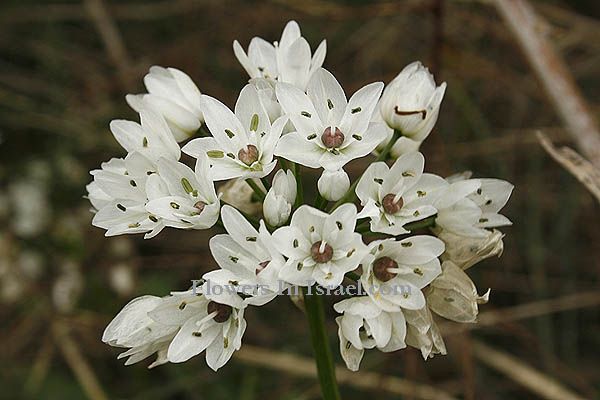Naples Garlic, False Garlic, Flowering onion,
Hebrew: שום משולש, Arabic: ثوم نابولي
| Scientific name: | Allium neapolitanum Cirillo | |
| Synonym name: | Allium pallens L. | |
| Common name: | Naples Garlic, False Garlic, Flowering onion | |
| Hebrew name: | שום משולש | |
| Arabic name: | ثوم نابولي | |
| Family: | Amaryllidaceae, נרקיסיים | |
| Subfamily: | Allioideae (formerly treated as a separate family, Alliaceae) | |
| Tribe: | Allieae (comprises a single genus, Allium) | |
| Genus: | Allium, שום |

|
| Life form: | Geophyte | |
| Stems: | Triangular in cross-sectioned and it reaches a height of up to 30 centimeters | |
| Leaves: | Alternate, rosette, entire | |
| Inflorescence: | Umbel fastigate, with 5-30 flowers; pedicels 15-35mm | |
| Flowers: | White, perianth cup-shaped or stellate; hermaphrodite, pollinated by bees, insects | |
| Fruits / pods: | Capsule 4-5mm (it can self-sow to the point of nuisance) | |
| Flowering Period: | March, April | |
| Habitat: | Mediterranean maquis and forest | |
| Distribution: | Mediterranean Woodlands and Shrublands, Semi-steppe shrublands, Shrub-steppes, Deserts and extreme deserts | |
| Chorotype: | Mediterranean | |
| Summer shedding: | Ephemeral |

Derivation of the botanical name: Allium, onion, chive and garlic. From the classical Latin name for garlic. neapolitanum, from Naples. The Hebrew word: שום, shum, Akkadian: sumu; Aramaic: Thomas; שום, אכדית: sumu; ארמית: תומא

|